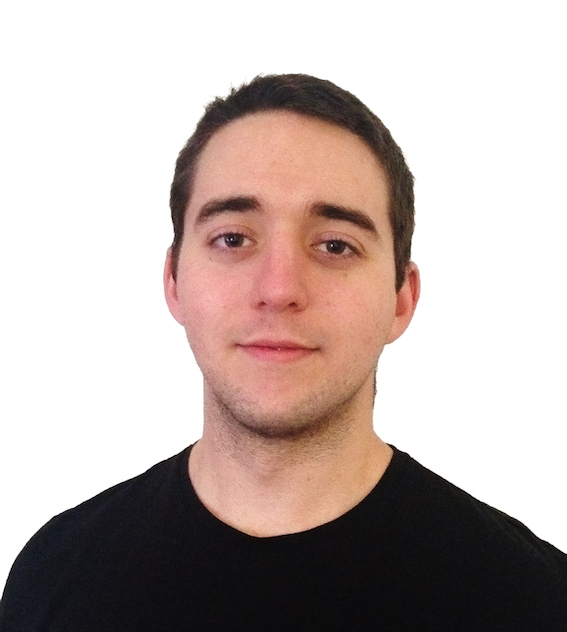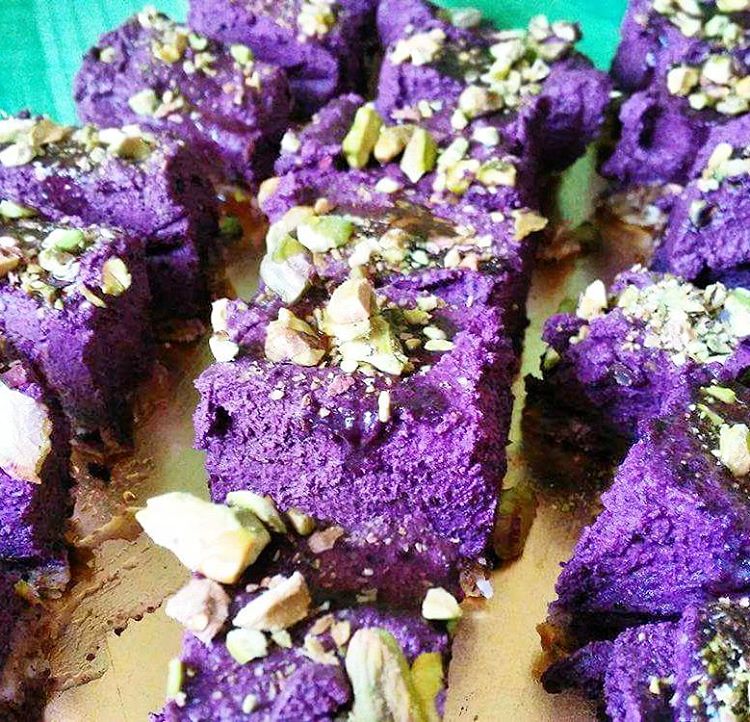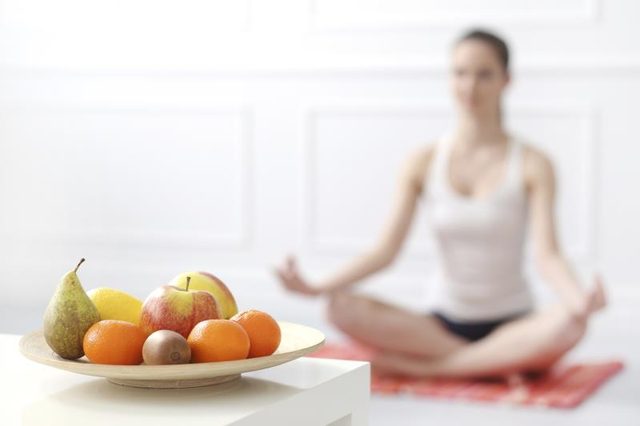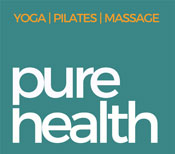Introducing our New Physical Therapist – Paul Andre Morand
 I am a physical therapist with broad experience in both chronic and acute pain and injury treatment. With a background in psychology I went on to study physical therapy in search for answers to my own chronic pain. This search has led me to studying all aspects of pain and injury. From the science of pain and neurology, to the hands on skills of massage and physical therapy, to the intricacies of human movement and movement restoration.
I am a physical therapist with broad experience in both chronic and acute pain and injury treatment. With a background in psychology I went on to study physical therapy in search for answers to my own chronic pain. This search has led me to studying all aspects of pain and injury. From the science of pain and neurology, to the hands on skills of massage and physical therapy, to the intricacies of human movement and movement restoration.
I combine modern manual therapy techniques, rehabilitative exercise, up to date pain science and functional neurology to provide the most effective therapy for all types of musculoskeletal pain. Methods I use include Anatomy in Motion (as showcased on the BBC show, Doctor in the House), MovNat, Hanna Somatics, Raynor Massage, DermoMyoFascial Restoration, the P-DTR method of functional neurology, as well as traditional physical therapy techniques. My treatments will typically include a combination of all these skills, based on your individual needs and goals. This would generally include a detailed injury history, basic pain science education, movement assessments, hands on assessments, hands on treatment, and movement education to continue the rehabilitation between treatments.
Conditions treated include back, hip and pelvic pain, sciatica, piriformis syndrome, scoliosis, kyphosis, plantar fasciitis, foot and ankle pain, shin splints, knee pain, IT band syndrome, thoracic outlet syndrome, neck pain, whiplash, shoulder pain, elbow and wrist pain, carpal tunnel syndrome, fibromyalgia, jaw pain, and much more.
If you’d like to learn more about how physical therapy can help you with your pain, injury or mobility issues, call or e-mail to set up a free 15 minute phone consultation.
0873225045 or Reception at 014404343
Vegan ‘cheese’ cake & coconut Energy balls
 Raw Vegan ‘Cheese’ Cake with Blueberries
Raw Vegan ‘Cheese’ Cake with Blueberries
Addicted to this spring Raw Vegan ‘Cheese’ Cake with Blueberries.
Base
250 g Medjool Dates, pitted
2/3 glass shredded coconut
What Is A Yoga Diet? Here Are 7 Things To Look For
 There’s a lot of hype out there when it comes to what to eat. Being environmentally conscious with our food choices seems to be the “in” thing right now. Farm-raised fish, hormone-free beef, free range chicken, farm-to-table and vegan restaurants, organic, gluten-free, macrobiotic—the list goes on! Many people often mistake a vegan diet for being the same as a yogic or yoga diet. But what does it actually mean? What is a yogic diet?
There’s a lot of hype out there when it comes to what to eat. Being environmentally conscious with our food choices seems to be the “in” thing right now. Farm-raised fish, hormone-free beef, free range chicken, farm-to-table and vegan restaurants, organic, gluten-free, macrobiotic—the list goes on! Many people often mistake a vegan diet for being the same as a yogic or yoga diet. But what does it actually mean? What is a yogic diet?5 Ways to Love Your Life
 1. Contemplate. Meditation quiets a busy mind and cultivates a witness who can watch what’s happening in your life with a bit of emotional distance. The benefits are enormous – many meditators say they have more clarity, experience less anxiety, and feel better physically. Most of all, the practice offers an experience of calm and contentment.
1. Contemplate. Meditation quiets a busy mind and cultivates a witness who can watch what’s happening in your life with a bit of emotional distance. The benefits are enormous – many meditators say they have more clarity, experience less anxiety, and feel better physically. Most of all, the practice offers an experience of calm and contentment.Breathe out and think, “What I’ve achieved is enough.” Repeat this cycle for several minutes, paying special attention to the feelings that arise along the way. Become aware of both the feelings of peace and the feelings of resistance that might come up. If you’re like most contemporary Americans, some part of you is going to have a series of doubts: “Yes, this is a nice exercise, but what about my dreams and wishes?” In short, you may find yourself wondering if this practice isn’t just an invitation to goof off, a justification for social inequity, or a consolation prize for losers.
Reiki: A Groundbreaking Scientific Study
 After decades of often disputed validity, the effectiveness of Reiki, a holistic energy treatment is gaining new respect within the medical community. Not only are highly reputable medical facilities throughout the U.S. offering patients alternative healing programs such as Reiki, those facilities are analyzing the benefits of their programs and are submitting them for review and compilation. The results of these Reiki research studies are nothing short of remarkable.
After decades of often disputed validity, the effectiveness of Reiki, a holistic energy treatment is gaining new respect within the medical community. Not only are highly reputable medical facilities throughout the U.S. offering patients alternative healing programs such as Reiki, those facilities are analyzing the benefits of their programs and are submitting them for review and compilation. The results of these Reiki research studies are nothing short of remarkable.
A Brief Explanation of Reiki
Why Reiki Has Been Discounted
For years Reiki, along with other methods of holistic therapies were looked upon with disdain, even contempt from medical associations, practitioners, mainstream scientists and clerics. The idea that the human body was permeated or surrounded by an invisible, etheric body of “life force energy” was considered to be no less than nonsense. These negative conclusions were formulated on the premise that “life energy” fields such as those accepted in China as Chi or qi, in Japan as ki and in India as prana , were “unseen” and “immeasurable” by traditional research or scientific instrumentation.
But now all that is changing. William Lee Rand – Founder of the International Center for Reiki Training
Reiki Clinical Studies, Improved Reporting
There’s never been a comprehensive list of controlled, evidence-based research that was accessible to the holistic, medical, and scientific communities. It wasn’t until 2005 when William Lee Rand, founder and president of the International Center for Reiki Training and a pioneer in worldwide Reiki awareness formed the Center For Reiki Research and developed what is now known as The Touchstone Process.
What is The Touchstone Process?
The Touchstone Process is actually a peer review method for analyzing the current state of scientific studies done on Reiki programs in hospitals, clinics and hospice facilities throughout the United States. The process of critique is rigorous, impartial, and consistent and incorporates the best practices for scientific review.
William Lee Rand began formulating The Touchstone Process after developing the Reiki In Hospitals website, considered to be the most comprehensive compilation of hospitals offering Reiki treatments throughout the world.
The Touchstone Process is unique. Never before have there been so many worthy studies of Reiki gathered, analyzed and evaluated within a single source.
Reiki Case Studies
The most recent data analyzed (during 2008-9) shows strong evidence that Reiki is indeed responsible for a positive biological response in both humans and animals.
The strongest evidence (rated “excellent” in the Process) was reported in the most carefully controlled of all experiments; non other than laboratory rats. In both 2006 and 2008 stressed-out lab rats received Reiki treatments and they all showed significantly reduced stress, anxiety and depression responses. “Sham” or bogus Reiki treatments were given to the placebo group and they showed no reduction in stress, anxiety or depression.
Testing in humans performed between 1993 and 2006 showed ratings from Satisfactory to Excellent, all suggesting that the benefit of Reiki treatments were positive in controlling pain levels in humans. There were some “confounding variables”, which is typical in hospital (as opposed to laboratory) studies; however, the placebo Reiki treatments in this experiment were by contrast ineffective in controlling pain.
Vital Signs
New York Presbyterian Hospital/Columbia University Campus conducted one of the first studies ever performed to determine the effectiveness of Reiki treatments on the autonomic nervous system. This “blind, random study” included a Reiki treatment group, a “sham” treatment group and a “control” group. The testing began with all participants at “baseline” autonomic nervous systems levels. The results within the Reiki treatment group showed a lowering of these levels including heart rate, respiration and blood pressure. These positive results led the team to recommend further, larger studies to look at the biological effects of Reiki treatment.
It’s interesting to note that Columbia/Presbyterian was one of the first hospitals to offer Reiki as part of their Integrative Medicine Program (CIMP). The now famous cardiovascular surgeon, Dr. Mehmet Oz brought tremendous attention to Reiki when he invited Reiki practitioners to treat patients during open heart surgeries and heart transplant operations. Dr. Oz is often quoted as saying, “Reiki has become a sought-after healing art among patients and mainstream medical professionals.”
Words of wisdom from an internationally recognized Reiki Practioner and author who had been published in peer-reviewed medical journals
Reiki Passes Tests with Flying Colors
There have been many other controlled studies submitted to peer-journals and to The Touchstone Process for review. Ailments and disorders that tested favorably to Reiki treatment include:
1. Post operative pain after tooth extraction
2. Cognition in elderly, related to dementia/Alzheimers 3. Pre-operative relaxation and post-op pain
4. Pain in chronically ill patients
5. Depression and stress
6. Well-being in Reiki practitioners
As of 2009, The Touchstone Process has evaluated 25 test studies that appeared in peer-review journals evaluating the merits of Reiki Treatments. Taking into consideration only the most rigorously controlled studies, the team reported that 83% showed moderate to strong evidence in support of Reiki as a viable, therapeutic healing modality.
Only one study proved solidly negative and that was for the treatment of fibromyalgia-associated pain levels. As is the case with conventional drug treatments, not all therapies prove to be effective.
Thinking Positively
Despite these findings and the impressive number of highly reputable hospitals offering Reiki Treatments to patients, there will be those who continue to deem Reiki and other forms of energy-medicine as being “nonsensical”.
As recently as 2009, reviews of randomized studies”of Reiki research conducted by Edzard Ernst, M.D., Ph.D. and his colleagues at the University of Exeter, concluded that most were poorly designed and presented insufficient evidence to suggest that Reiki was an effective method for healing any condition.
That same year, the United States Conference of Catholic Bishops came out with a statement urging Catholic health-care facilities and clergy not to promote or support Reiki therapy. They issued a statement emphatically concluding that Reiki cannot be an effective method of healing “within the findings of natural science or in Christian belief”.
One can only look to the future of science and the evolution of scientific testing, evaluation and responsible reporting which began with The Touchstone Process to alter these perceptions.
Conclusion
A spokesperson from Columbia Integrative Medicine Program at the New York Presbyterian Hospital (CIMP) perhaps expresses it best, saying,
“I find the practice of Reiki very rewarding, as a practitioner. Patients have reported deep relaxation and a sense of profound healing, after one session. I feel that Reiki is a huge asset for any hospital setting, because patients sense that they are in a truly caring environment.” As Reiki continues to become “a huge asset” for the hospital setting, analytical reporting such as The Touchstone Process continues to add to the much needed pool of evidence that Reiki is indeed a worthy, effective method for facilitating the healing process; one that can contribute to the betterment of patients everywhere and to the betterment of our health care systems.
25 Ways to Be Kind
You don’t need a reason to help people. Let’s remember to be kind to one another. It isn’t always apparent on the outside when we are facing struggles on the inside. After all, when this is all over, all that will really matter is how we treated each other.
When we enter this world our Kindness IQ is intact. We can keep it that way through our actions. Kindness is like a muscle–it gets stronger the more you use it…or atrophies if you don’t.
You don’t need a reason to be kind to people. Instead, here are 25 suggestions and ideas of ways to be kind.
25 Ways to Be Kind.
1. Smile and make someone’s day a little sweeter
2. Look for ways you can promote peace
3. Just listen
4. Offer a hug or embrace
5. Invite someone new into your friend tribe
6. Send out a kind email or card
7. Give someone a genuine compliment
8. Help someone out in a practical way, just because
9. Hold open the door for the person behind you
10. Encourage a friend or family member when they are uncertain or
unmotivated
11. Make peace with someone that has hurt you
12. Strike up a conversation with a stranger
13.Let someone into your lane while driving
14. Pay for the person behind you in line
15. Give your time to a friend or someone who needs it
16. Say Thank You and Please everyday without fail
17. Meditate on lovingkindness: May you be happy, healthy, peaceful and free from suffering and may my actions in some way contribute to the happiness, health, peace and freedom for all
18. Say “I love you” a little more often to your family and friends
19. Pause before you speak–choose words with positive intention
20. Help someone get some rest (watch their kids, run an errand, bring them dinner)
21. Pick up litter you see thrown about even if it’s not yours
22. Remove complaints and curses for one week
23. Gift something meaningful to someone: loan a book, bring flowers, drop off cookies
24. Make a donation
25. Give up your seat or for that matter move your yoga mat in class with positive intent
I am dedicating myself to inspire everyone to bring Kindness to the forefront. Let’s be more active in our efforts not because we have to, but because we want to. And not even because others have been kind to us but because being nice is the way of the heart.
Kindness is always a choice. The more conditioned we are to respond with kindness, the more natural it becomes. It is on purpose with purpose. Today, join me in starting a Kindness movement and together we can raise our global Kindness IQ!
Love yourself, love your day, love your life!
SPRING DETOX SMOOTHIE RECIPE
 This detox smoothie is FULL of healthy, naturally detoxifying ingredients. Let’s take a look at each ingredient.
This detox smoothie is FULL of healthy, naturally detoxifying ingredients. Let’s take a look at each ingredient.
Cilantro contains phytonutrients, flavonoids and active phenolic compounds. It helps your body get rid of heavy metals by binding to them. Eating a diet rich in cilantro can also have great anti-inflammatory and digestive benefits. If you’re one of the thousands of people who can’t stand cilantro, try adding it in small amounts to pesto or smoothies to reap the benefits without being overwhelmed by the flavor.
7 Signs That You Need Acupuncture This Spring
 Spring is here! Yes! Except for the fact that many people don’t feel so hot this time of year. The flu is – knock on wood – mostly behind us. Allergies have not quite exploded yet. So, why do so many of us feel off in the early days of spring?
Spring is here! Yes! Except for the fact that many people don’t feel so hot this time of year. The flu is – knock on wood – mostly behind us. Allergies have not quite exploded yet. So, why do so many of us feel off in the early days of spring?
You can kindly thank your Liver!
5 Ways To Make Your St. Patrick’s Day Healthier
 Healthy Ways to Celebrate St. Patrick’s Day
Healthy Ways to Celebrate St. Patrick’s Day
1. Make your drink green: Whip up a kale or spinach smoothie. These green leafy veggies are nutritional powerhouses: they’re both good sources of fiber, iron, magnesium, potassium and calcium. They’re also high in carotenoids, a cancer-fighting antioxidant. Make a green smoothie with avocado, kale, bananas and almond milk. This nutrient, protein and literally green smoothie will keep you feeling full and satisfied while still letting you sport your Irish pride
2. Heavy, dense foods like sausages, mashed potatoes and corned beef hash. Substitute a green salad made with fresh spinach, strawberries and a light sprinkling of feta cheese. It’s fresh, healthy and mirrors the green, red and white colors of the Irish flag!
3. If you’re planning on attending a parade or pub crawl, consider biking there or walk! (anyway city centre is closed) We all know that cycling and walking is a great workout for your heart and a super fun group activity. Decorate your bicycle with recycled and thrift decorations to stay environmentally friendly and remember to always wear your helmet!
4. If you like to put your best Irish face forward by painting yourself with the colors of the Irish flag, consider this. Most store bought face paints contain high levels of artificial colors and ingredients that are both harmful to your skin and the environment. Making your own face paints using a mixture of cornstarch, organic face lotions, and natural or homemade food colorings are good for everybody!
5. Irish dance – Hoof it for a half hour and you could burn 150 calories. New to this form of folk dance? This video will teach you the basics.
Here you can find more about Healthy ways to celebrate St. Patricks days
20 Scientific Reasons to Start Meditating Today
 I started meditating soon after 9/11. I was living in Manhattan, an already chaotic place, at an extremely chaotic time. I realized I had no control over my external environment. But the one place I did have a say over was my mind, through meditation. When I started meditating, I did not realize it would also make me healthier, happier, and more successful. Having witnessed the benefits, I devoted my PhD research at Stanford to studying the impact of meditation. I saw people from diverse backgrounds from college students to combat veterans benefit. In the last 10 years, hundreds of studies have been released. Here are 20 scientifically-validated reasons you might want to get on the bandwagon today:
I started meditating soon after 9/11. I was living in Manhattan, an already chaotic place, at an extremely chaotic time. I realized I had no control over my external environment. But the one place I did have a say over was my mind, through meditation. When I started meditating, I did not realize it would also make me healthier, happier, and more successful. Having witnessed the benefits, I devoted my PhD research at Stanford to studying the impact of meditation. I saw people from diverse backgrounds from college students to combat veterans benefit. In the last 10 years, hundreds of studies have been released. Here are 20 scientifically-validated reasons you might want to get on the bandwagon today:
